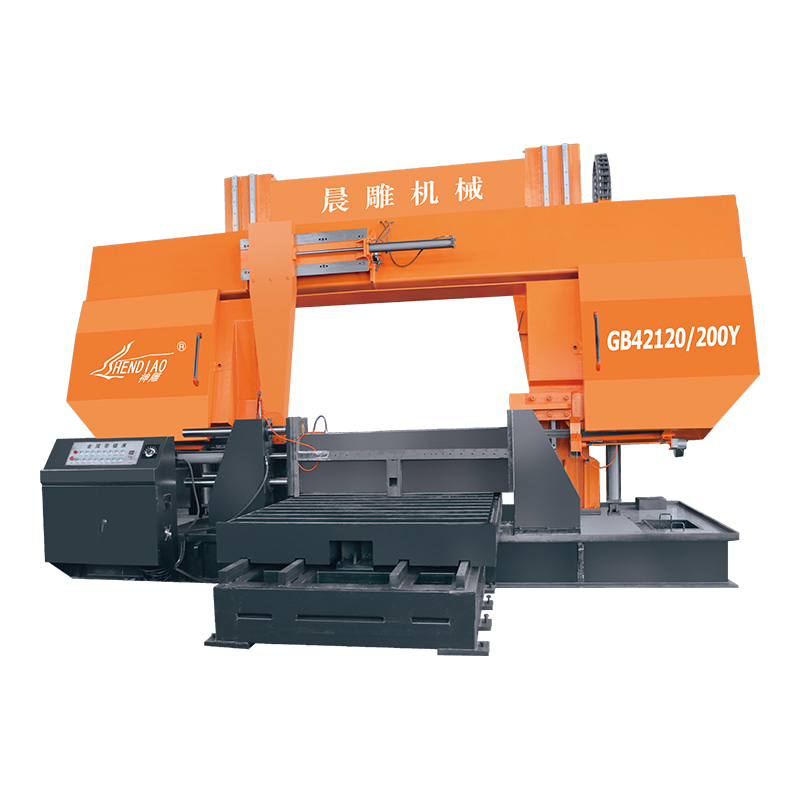GZ4243B Upgraded Manual-Automatic Dual-System Operation CNC Band Sawig Machine
Cat:CNC Band Sawig Machine
Suitable for sawing and cutting materials into the same size in massiv...
See DetailsIn modern metalworking, the flexibility and adaptability of cutting equipment are crucial factors for efficiency and precision. One of the key features that determines a machine’s versatility is its ability to accommodate blades of different sizes and tooth pitches. The Metal Cutting Band Saw Machine has gained for offering this level of adaptability, allowing operators to process a wide variety of metal materials, thicknesses, and profiles. Understanding the scope and limitations of this compatibility helps manufacturers optimize operations while reducing downtime and blade replacement costs.

Importance of Blade Size
Blade size, including length, width, and thickness, directly affects cutting performance. Wider blades provide greater stability and are suitable for straight cuts in thick or dense metals, whereas narrower blades offer better maneuverability for curves and detailed cuts. Similarly, thicker blades resist deflection during heavy-duty cutting, maintaining straight and accurate edges. A band saw capable of accommodating multiple blade widths and thicknesses allows operators to switch between jobs without needing multiple machines, saving both time and floor space. Compatibility with a range of blade lengths also enables the cutting of different stock sizes, from small bars to long metal beams.
Tooth Pitch Selection and Cutting Efficiency
Tooth pitch, which refers to the spacing between individual teeth on the blade, is another critical consideration. Coarse-tooth blades with larger pitch excel at cutting softer metals quickly but may leave rougher surfaces. Fine-tooth blades, on the other hand, produce cleaner cuts and are preferred for thin materials or harder metals. A band saw that supports varying tooth pitches allows operators to match blade characteristics to material type and thickness, enhancing both precision and efficiency. By adjusting tooth pitch selection, manufacturers can reduce burr formation and achieve smoother edge finishes without additional secondary processing.
Adjustability and Machine Design
The compatibility of the machine with different blade sizes and tooth pitches relies on its design features. Adjustable blade guides, tensioning systems, and track alignment mechanisms ensure that blades of varying dimensions operate smoothly and remain properly aligned during cutting. These adjustments prevent vibration and deflection, which can compromise cut accuracy and accelerate blade wear. Machines lacking such adjustability often restrict operators to a limited range of blades, reducing flexibility and increasing the need for frequent tool changes.
Practical Applications and Industry Benefits
This versatility is particularly advantageous in workshops and manufacturing environments that process a variety of metals, including aluminum, steel, brass, and specialty alloys. Operators can quickly switch between jobs requiring different blade specifications without interrupting workflow or investing in multiple saws. For industries such as construction, automotive, and aerospace, where cutting requirements vary frequently, the ability to use a single machine for multiple applications improves productivity, reduces operational costs, and improves return on investment.
Maintenance Considerations
Even with adjustable compatibility, proper maintenance is essential to ensure reliable performance across different blade types. Regular inspection of guides, rollers, and tensioning components prevents misalignment and excessive wear. Lubrication of moving parts and periodic calibration allow blades of various sizes and tooth pitches to operate efficiently while extending the machine’s lifespan. By adhering to preventive maintenance protocols, operators can maintain consistent cutting quality regardless of blade configuration.
The ability of a Metal Cutting Band Saw Machine to accommodate different blade sizes and tooth pitches significantly enhances its versatility and operational efficiency. By supporting a range of blade dimensions, the machine allows precise cutting of multiple metal types and thicknesses while reducing downtime and tool replacement costs. Combined with proper maintenance and operator expertise, this flexibility ensures consistent high-quality cuts, making the machine an indispensable asset for modern metalworking facilities.